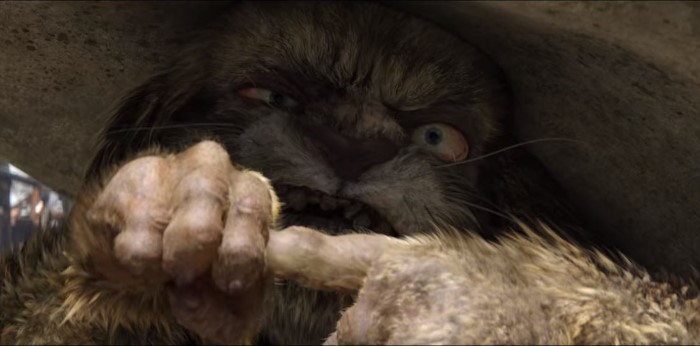Rango Is 10: A Stunning Animated Feature, and a Superb Western
Photos via Paramount
In the last 16 years, only two films produced by companies other than Disney/Pixar have won the Academy Award for Best Animated Feature. One of them was 2018’s much-loved Spider-Man: Into the Spider-Verse. The other? The epic lizard western known to discerning film geeks as Rango. It was a rare achievement, but a greatly deserved one for a film that still doesn’t often receive the esteem it deserves a decade later. Rango was the rarest of entities: An adult-oriented film cloaked in the guise of “kids movie” because of its animated nature, packed to the brim with loving references to the history of cinema and supported by a cast of veteran character actors rather than Hollywood A-listers. It’s one of the best pure animated movies of the last two decades, but it’s also more than that, being a legitimately great Western as well. From top to bottom, it’s impeccable.
A casual glance back through the last two decades of animated features quickly illustrates what an anomaly Rango truly is, especially when it comes to casting. Since the end of the Disney Renaissance it has been common, accepted practice to fill family friendly feature-length animated movies with as many A-list names as possible, whether or not those voices were particularly suited for their roles, with everything else on screen as an afterthought. Movie stars are how Hollywood has been selling animated features for more than two decades at this point, exemplified by films like Sing or Trolls where the big names on the marquee are meant to be the sole reason for admission. Rango, by way of comparison, certainly sold itself around the presence of Johnny Depp as the title character, especially coming off the epic profitability of the first three Pirates of the Caribbean entries, but it then fills out the rest of the cast with a murderer’s row of great character actors: Alfred Molina, Harry Dean Stanton, Ned Beatty, Bill Nighy, Ray Winstone, Stephen Root, Ian Abercrombie and more. The star power of Depp (who is also perfectly cast) is used to sell the film, but everyone else brings it to life. They all make each other better.
Perhaps it was working alongside those luminaries that got such a great performance out of Depp as well—one of the very best comic turns of his long career, which is saying something. Depp gives incredible vitality to Rango, as a cloistered chameleon who is ripped from a static, almost purely hypothetical existence and thrown into a situation with real stakes for the first time in his life. The choice of species as chameleon is of course deeply metaphorical, as Rango sees himself as an actor or dramaturgical protagonist in everything happening around him—one who must adjust himself to mimic his surroundings because he’s armed only with theoretical knowledge rather than first-hand experience or a strong identity of his own. He literally does exactly that when he arrives in the Old Western town of Dirt, essentially trying the gait of each resident on for size by walking behind them and mimicking their movements, ever in search of an identity that suits him. His dramatic arc will see the timid lizard come to the conclusion that he must become an active participant in writing his story, which can include risking his neck to genuinely become the quixotic hero he previously playacted. Depp pulls off that air of false bravado, giddy LARPing and deep-down insecurity like no one else could have managed.
But Rango isn’t merely above average “for a kid’s movie,” flying above the sadly low bar we set for children’s/family entertainment. From start to finish, it’s a grandiose spaghetti western with adult audiences in mind, albeit one that has been sprayed with a blast of absurdist humor buckshot. Look no further than its exceedingly morbid dialogue, as in the saloon introduction scene where our liar of a hero rhapsodizes about “spending three days in a horse carcass, living off your own juices.” The whole thing is glibly macabre, peppered with hilarious examples of what Blazing Saddles would have referred to as “authentic frontier gibberish.”
 This is now how you draw a rabbit character in a kids movie, folks.
This is now how you draw a rabbit character in a kids movie, folks. Separated at birth.
Separated at birth.